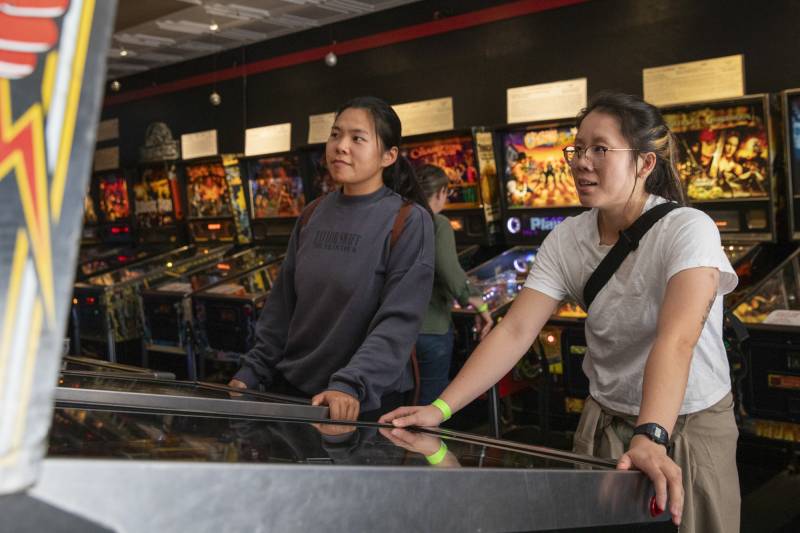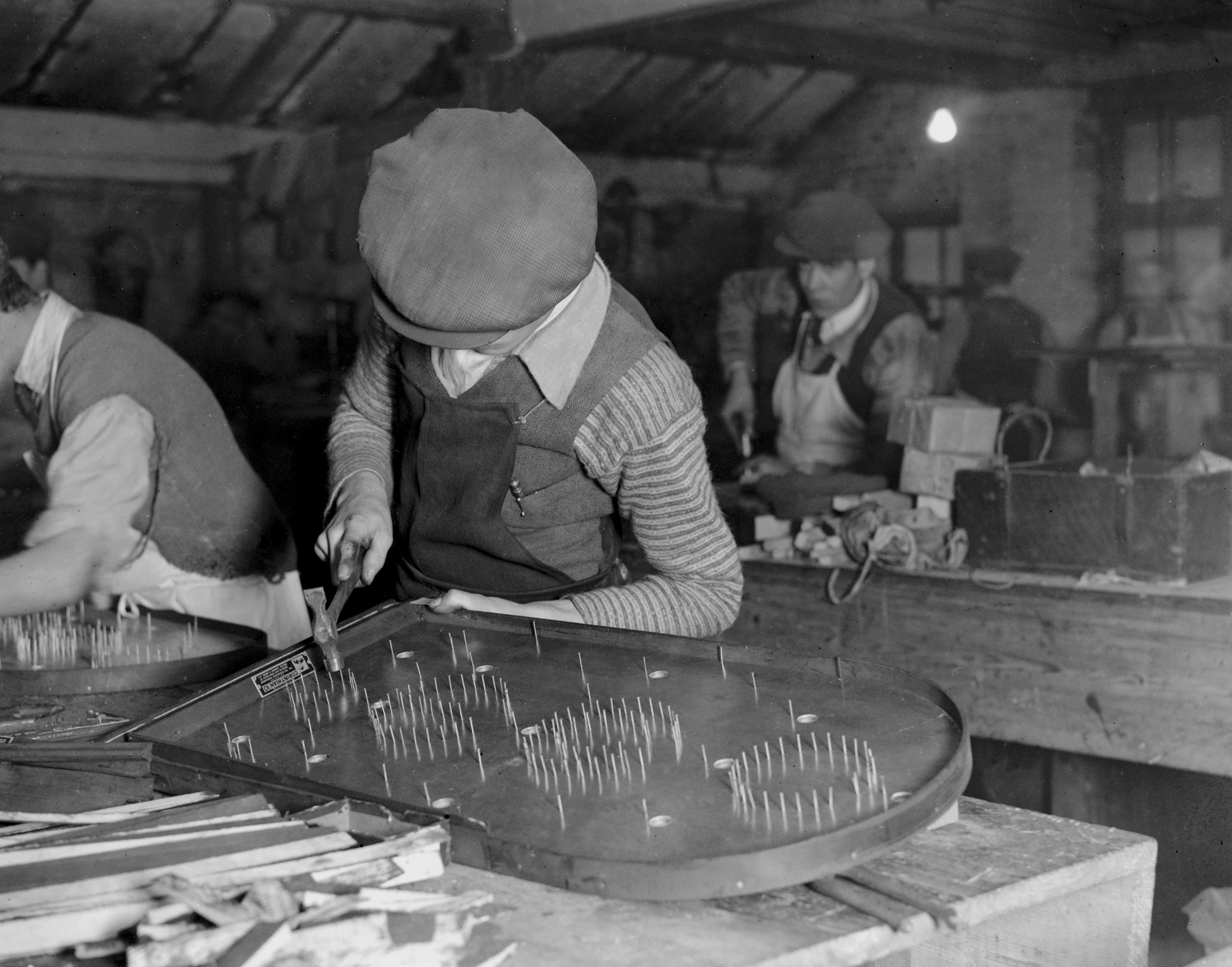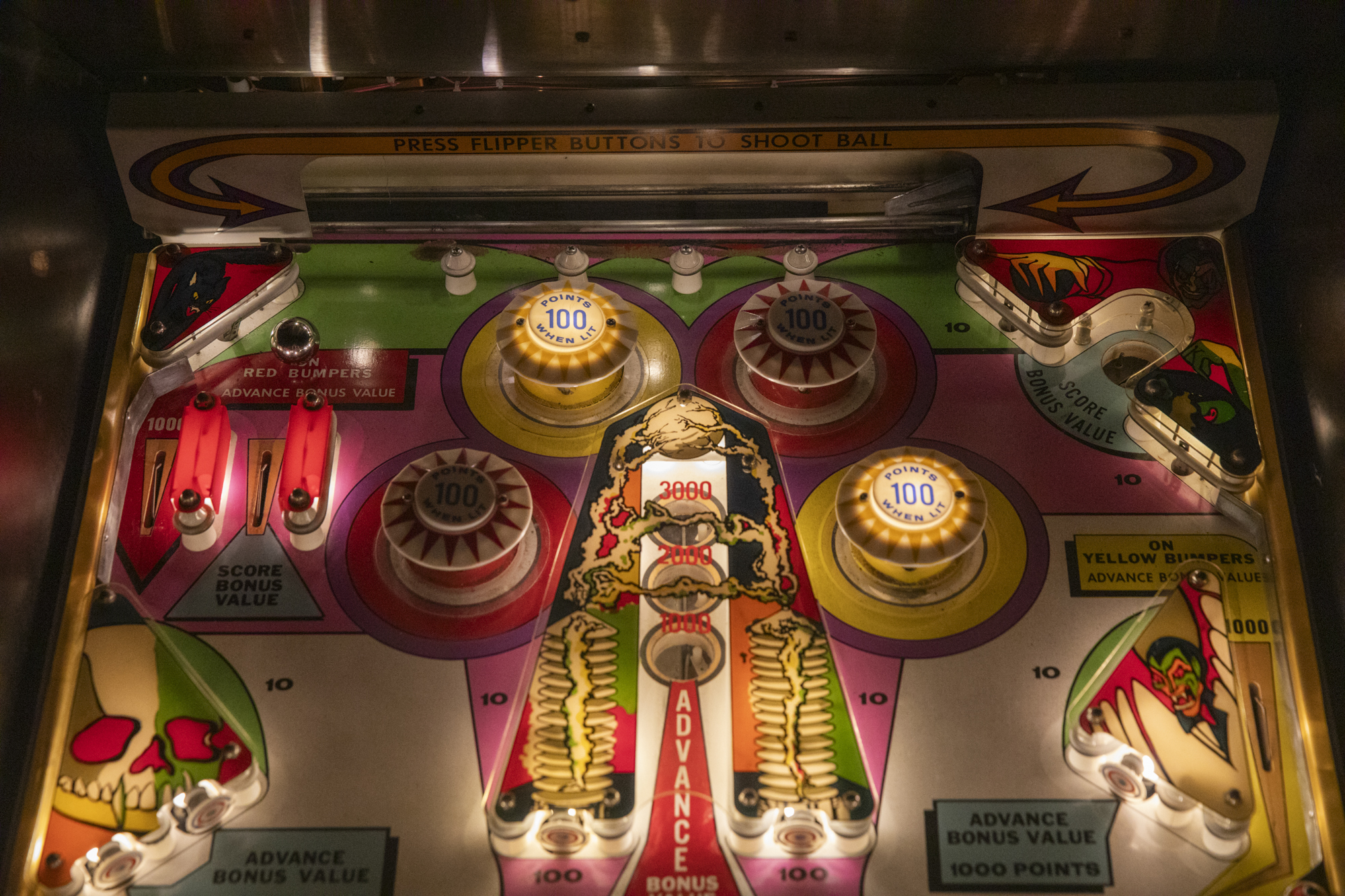When Black Mirror screenwriter Charlie Brooker created San Junipero, a fictional California coastal town, he used a few tricks to clue viewers into the era: the cars were old, there was a billboard advertising the movie The Witches of Eastwick, and when Yorkie, the young and awkward protagonist walked into a bar, she went straight to the arcade machines.
Alameda's Pacific Pinball Museum Used To Operate Like 'a Little Speakeasy'

To say that arcades were the hallmark of entertainment in the ’80s is probably an overstatement, but they did represent a certain cultural moment in American history. A central component of any arcade is the pinball machine. Those can be hard to find these days unless one visits the Pacific Pinball Museum, where nostalgia reigns.
The nonprofit interactive museum in Alameda has nine different rooms and over 100 pinball machines, spanning the history of this game from its early ancestor, bagatelle, through modern times. President Lincoln even played bagatelle, one of many times when Americans would go through a pinball craze.
“I’ve been a pinball fan since I was a kid, so it’s really cool to get my fix,” said Simon Pyle, a visitor to the museum. “And then, also to bring my kids here. My dad always brought me to play pinball, so it’s cool to pass that along, too.”

Gambling or just for fun?
Visit today and it’s all family fun, but pinball was once considered a game of chance and was illegal in some places. That’s because the early pinball machines didn’t have bumpers or flippers. There was also no way for a player to control the ball’s trajectory. Flippers weren’t introduced until 1947.
In the early 1940s, politicians across the United States took a stance against pinball because of its supposed ties to gambling. Most notably, New York Mayor Fiorello LaGuardia made a big show of confiscating and dumping thousands of pinball machines as part of his campaign against organized crime.
Some of those laws banning pinball stayed on the books for a long time.
“When I first opened, that was 2002, and it was illegal to have an arcade in Alameda,” said Michael Schiess, executive director and founder of the Pacific Pinball Museum. “And so, it basically became a little speakeasy and people just would come in through the back door.”
Schiess bought his first pinball machine with the intention of taking it apart and making kinetic art out of it. But once he started playing, he got hooked and started buying more and more machines.
To get around the ban and operate legally, Schiess removed the coin slots in the machines and displayed his collection as a nonprofit museum, where people pay an admission fee and can play as long as they want. In 2014, Alameda changed its law banning pinball, but by then the museum was already established.
Pinball art through the ages
Art is also an important part of pinball nostalgia. Pinball artists Roy Parker and George Molentin were among the most well-known. The art on the first pinball machine with flippers, Humpty Dumpty, was done by Roy Parker. In it, a king sits on a throne surrounded by beautiful women; high scores are displayed on the tower and rampart.

In the mid-1960s, pinball art took a turn toward the contemporary. Known as “Pointy People,” this new art style is characterized by angular strokes and pointy articulations. A prime example is the 1965 pinball machine Pot ‘O’ Gold.
Housed in the Pointy People exhibition room at the museum, it depicts a pot of lost treasure buried under the sea. It was the very first artwork from pinball artist Jerry K. Kelley, who developed this style.
“[The museum] wasn’t ever supposed to be an amusement arcade,” Schiess said. “It was supposed to be a place where you learn about art and about technology and about history.”
A history lesson may be Schiess’ intention, but the thrill of playing is what draws most visitors here. Many linger in the Modern Room, where the newest additions to pinball history proudly display their blockbuster-licensed themes: Star Wars, Iron Man, Indiana Jones and The Addams Family.
But what’s modern now will soon be relegated to history.
And, as with many pinball machines that came before, it’s comforting to know these relics of our culture will be preserved on a slanted surface that lights up and dings forevermore.
The Pacific Pinball Museum, 1510 Webster St., in Alameda. Open daily except Mondays.